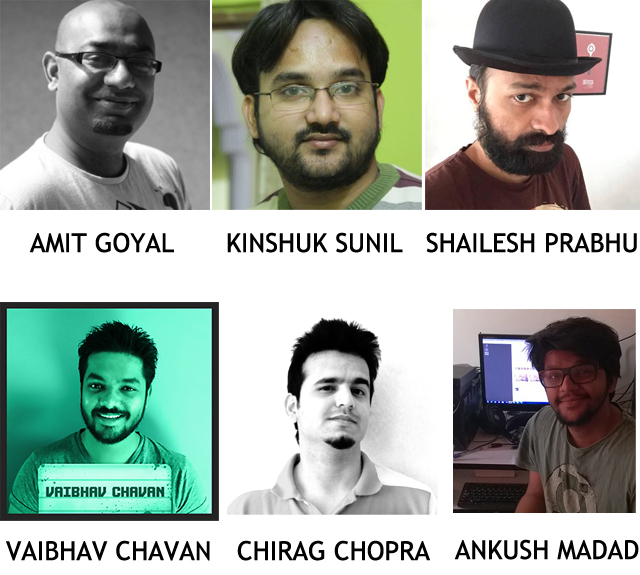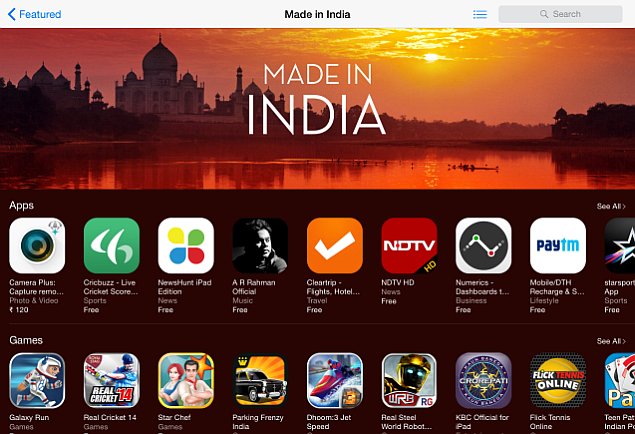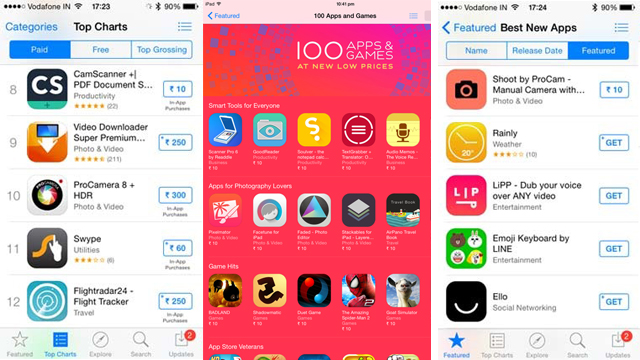Developers in India for some time now have been asking app platforms to give a differential treatment to the Indian marketplace considering the lower credit card penetration and higher pricing of apps which has lead audience to shy away from the premium apps.
The latter’s request has just come true thanks to Apple’s introduction of new pricing tiers which allows app developers to charge as low as Rs 10 for their apps and games. The developers now get an option to have different price points when it comes to their products in different regions.
Apple has introduced this tier pricing system in India, Indonesia, Russia, South Africa, and Turkey as well. Prior to this, the apps were listed in US dollars and the least price would be $0.99 which would be equivalent to Rs 60. But now with the price tier introduction, developers can charge Rs 10 and this pricing will also apply to in-app-purchases (IAPs). Developers wanting to charge more are free to do so as before.
This move is likely to significantly improve the average revenue per user in low-per capita countries like India, where apps are unlikely to be impulse purchases. There will be more users who will now be the first time buyers of apps and be open to experiment when it comes to digital content. Also, due to the lower credit/debit card penetration and fear of entering sensitive information online, introduction of carrier billing in the country could further make payments possible in the tier 2 and tier 3 cities.
We asked some Indian developers, how important the change is for them and will the audience now be more open to the premium apps/games with new price:

Impact of Rs 10 app/games on the gaming ecosystem:
Amit Goyal – co-founder at SuperSike Games: Theoretically, it should increase the sale of premium apps, but we still have to wait and watch. In my opinion the problem is not the price, but the perception. Most people who buy smartphones generally do not attach any premium to apps, given that there are so many free ones to choose from as well. Whether they’ll feel that a price of Rs 10 is justified when free apps and games are also available remains to be seen.
Shailesh Prabhu – Founder at Yellow Monkey Studios: Honestly, it’s a little early to say. But it’s a good option to have in this price sensitive market. Whether people start downloading more because of it is yet to be seen but it’s a good step on the part of Apple.
Ankush Madad – co-founder at Dropout Games: I think it’s a great move by Apple. I had read about the announcement couple of weeks ago. Since it’s a new implementation we’d have to wait and see if it actually works but the hopes are high. I personally don’t think it’ll add a lot to the revenues but it’s a step in the right direction. This hopefully will introduce Indian audience to the concept of Premium Mobile Gaming.
Kinshuk Sunil – Founder at Hashstash Games: I think it is too soon to see an impact, but the prospects are quite bright. Circulets and Splash Damage are both available for Rs 10 and we are already seeing interesting behavior from China and India: sales have picked up. With such a low entry point, people should be more open to buying content and this also heralds a new way forward for micropayments. The opportunities for developers are immense. On a darker side, paywalls can become more delimiting, when you can pay such lowly amounts.
Chirag Chopra – Founder at Lucid Labs: It’s a good change. This also means that players will perceive these games as a low-standard product due to its absurd low price. Developers can expect increase in downloads but I am not sure if this is a profitable model to survive in the industry.
Vaibhav Chavan – Founder at underDogs Studios: A bold move by Apple which most of us were waiting for. The major impact this change will do is on creating an audience that can start paying for games. It’s a gateway for paid games in creating an audience which can now start paying here. For freemium games, people will now spend and start upgrading their in-game progression which was avoided due to pricing range.
Statistically most of the revenue is made through IAPs, this change will help players as well as developers from India; and in the long run, this would definitely benefit the developers as I believe the first step to start this was important and Apple has done it.
Will people change their perspective toward premium games due to lower pricing?
KS: The barrier to making the purchasing decision would definitely be lower. More people will be willing to buy and experiment with a game that costs Rs 10 over Rs 60. So this change could help make people more open to buying things. I am sure this addition to pricing policy at Apple can also lead to more experiments in the pricing space including operator billing. Will it change the perspective? It will definitely give things a healthy push in the right direction.
SP: The lower price tier is only in India and a few other countries, the only change in perspective it could have here is ‘OK let’s give this a shot’ because otherwise no one was trying paid games out here anyway. If that happens, it would be a good thing.
AG: I’m not sure if you can call something priced at Rs 10 as “premium”. However, if people do begin to accept this pricing and start buying more apps, they may notice the improved experience that paid apps would provide and may actually be more open to buy not just the Rs. 10 apps but even the more expensive ones. But that’s the best case scenario in my mind.
VC: Before this change, people really hesitated to buy the games/IAPs as the pricing was high compared to the western countries considering India’s currency. Rs10-30 will be far more convenient for people to try out new games than the current pricing. Similar to the whole scenario of what Uber is doing to Indian customers here with an objective to make it a habit. People are already used to it and it’s definitely going to help them in the long run.
CC: I hope they do. There isn’t any excuse left now. It can’t get any lower than this. Spending Rs 10 on a product doesn’t seem like a bad option compared to the original prices of some games and apps which were around Rs 120.
AM: I doubt it’ll work as well as Apple expects. Though price was an issue, it’s not the biggest issue for a country like India. Credit Cards are the real issue. I have personally seen that people are hesitant when it comes to credit cards.
A lot of people currently don’t have access to credit cards and those who do are scared to put out their card details or use them to buy a game. This price tag combined with alternative payment methods including Debit Card and Wallets will definitely improve the sales from India.
As for the remaining 5 countries, the credit card penetration is a bit higher as compared to India and they’re more willing to spend as compared to Indians so one can expect some amount of sales from those countries.

Will it also have an adverse effect on the retention factor of the games, apps?
CC: Retention is an issue here. Since I have spent Rs 10 on a product, I won’t be that serious about it compared to something which I have purchased for over $2. Of course I will play it for few days maybe but when I leave it, I won’t have much guilt about it since Rs 10 isn’t that much. I have bought games for Rs 300 and I wanted to complete them because I have paid a hefty price for it, not sure about Rs 10 game though.
AM: Adverse? I think not. It might help in changing people’s mind-set to an extent. People not willing to spend Rs 60 for that nice in-app purchase in their favourite game wouldn’t mind spending Rs 10 but it’ll come back to the point where either they don’t have credit card or will they’d prefer not to use it.
SP: I don’t see how or why it should have an adverse effect, however whether it does increase consumption as much as people expect it to, only time will tell.
AG: I dont think so. The reduced retention is a result of the fact that users are spoilt for choices thanks to the free apps. I would expect people to spend time with apps they pay for, even if it is Rs 10.
KS: I can’t see why. Though, I fear it might make freemium a little more impulsive.
VC: I don’t think so. Retention has nothing to do with the price changes; it will totally depend on the addictiveness of the game.
How will it affect visibility of the game?
AM: I don’t think it’ll affect the visibility of the game. If your game is not in the top charts or on the front page, regardless of what your price tag is, it won’t sell. However, If Apple decides to create a feature category for games that have implemented these low price tags, similar to the “Pay Once and Play” category, then can definitely help improve visibility of those games.
AG: Apple recently featured the Rs 10 apps on the storefront, which helped visibility of many of these apps. You can also expect more sales of Rs 10 apps, pushing them up the charts and be more visible. But that again is a function how well the Rs 10 price point is accepted.
SP: I don’t see it having any effect on the visibility, the number of apps on the store will be the same and the store fronts will continue to operate the same way (I presume), once the initial promotions are done.
KS: I don’t think visibility of games will get affected much. First of all, these low pricing are only available for select markets; not everywhere. And then they are available to all developers. So the fight for visibility will continue the same.
VC: It will affect the visibility of the game for sure. Most of the paid games when released are ignored just by seeing the price tag on it. This eventually makes the game fall in the rankings. This will help developers to get more downloads than earlier in the first place. Then with a simple logic of “More Downloads = More Visibility” the game will surely feature in Trending section on the stores.

